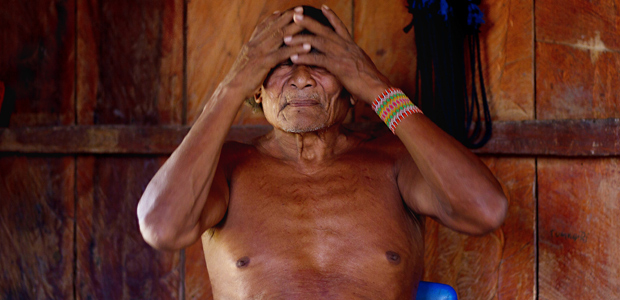Latest Photo Galleries
Brazilian Markets
17h38 Bovespa |
+0,02% | 124.196 |
16h43 Gold |
0,00% | 117 |
17h00 Dollar |
+0,15% | 5,2507 |
16h30 Euro |
+0,49% | 2,65250 |
ADVERTISING
Return to Homeland Makes 'Giant Indians' Triple
10/16/2017 - 11h47
Advertising
FABIANO MAISONNAVE
SPECIAL ENVOY TO THE PANARÁ INDIGENOUS LAND (MT/PA)
This year, the Panará indigenous people celebrate the 20th anniversary of the demarcation of their land. After they had been nearly exterminated following their first contact and later moved to the Xingu Park, they finally returned to their original region in 1997.
Since then, their population has tripled and reached some 600 members, representing one of the most successful cases of demographic recovery among Native Brazilians.
The story of the Panarás' contact begins at the end of the 1960s with unsuccessful attempts made by the military to approach them - the intention was to move them from the region to build Highway BR-163 (Cuiabá-Santarém).
In 1973 the Panarás contacted the expedition led by brothers Orlando and Claudio Villas Bôas. The end of their isolation nearly meant their extinction. Exposed to the flu and other diseases, between 34% and 41% of the community's population died in the first two years.
At the beginning of 1975, the Brazilian dictatorship obliged the Panarás to move to the Xingu Indigenous Park. In the 22 years they stayed there, the Panarás changed tribes seven times.
In 1993, in an expedition to their original land, they discovered that part of their territory was still preserved. They began a negotiation with the government which led to the legal ratification of 500,000 hectares at the end of 1996.
As the number of members had grown, they expanded from one to five tribes. Four of them are on the banks of the Iriri river. "The vitamin is making the number of children increase here," says Suakie, a mother of seven children.
However, the growing presence of non-indigenous cultures causes the older members of the tribe to worry as they are not enough to transmit their knowledge to the children and teenagers.
There is also pressure from neighboring farms. In June, a large number of fish died in the Iriri river - an investigation showed that their death was caused by pesticides in the water.
FABIANO MAISONNAVE traveled at the invitation of ISA (Instituto Socioambiental - Socio-Environmental Institute)
Translated by THOMAS MUELLO
Read the article in the original language
| Fred Mauro/ISA | ||
 |
||
| This year, the Panará indigenous people celebrate the 20th anniversary of the demarcation of their land |



